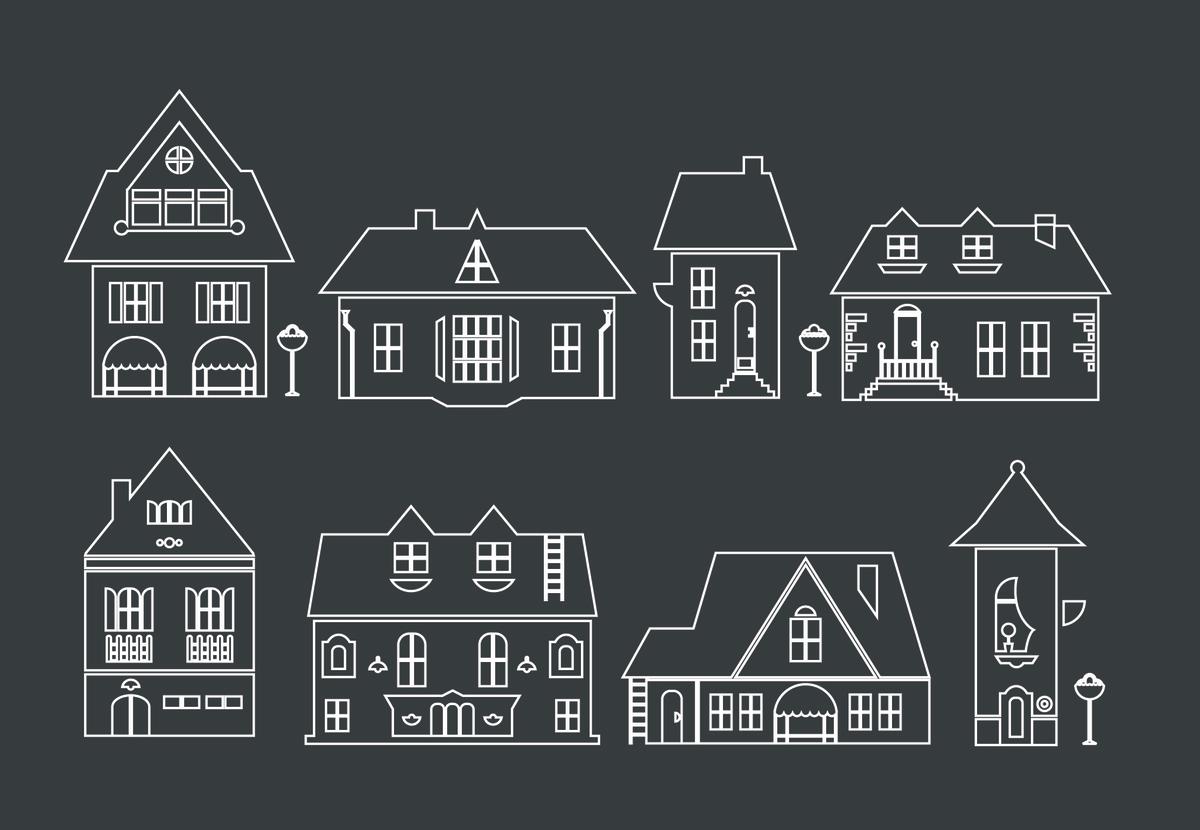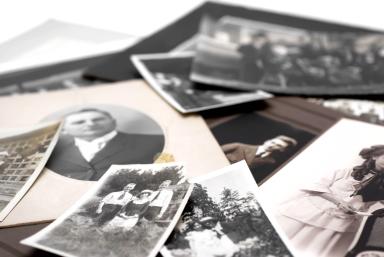Researching The History of Your Home

History is fascinating — especially when it’s right under your feet. If you’re curious about the history of your home, you’re in the right place. Read on to learn where to look for clues and how to find out more about your house, and about the people who lived — and perhaps died — in it before you came along.
Why Research The History Of Your Home?
So, why research the history of your home in the first place? In short, because it’s interesting.
When I’m not writing about tech or finance, I’m a keen amateur historian. I spend my evenings reading about local history, poring over aerial imagery and hiking in the forest, looking for ruins. I’m particularly interested in historical anthropology — where people lived and what they did in the past.
My interest in history began in Kansas, where my husband and I lived in a two-bedroom concrete-and-steel geodesic dome on the prairie. Its origins were known to us: my husband, his brother and their father built our “igloo” in the mid-1980s.
About 100 yards away, though — buried under about four feet of clay soil — sat a much older building. One April afternoon, we picked up a couple of spades, strapped our two-year-old daughter into a stroller and trundled her over there. In the space of about three hours, we exposed the corner of a small limestone cottage, complete with an embedded cast iron eye bolt. Once upon a time, it sat along the old Chisholm Trail; now, almost nobody knew it existed.
Digging, both literally and figuratively, can help you learn more about your property. This type of research can be pretty challenging — and you’ll have to wear many hats — but you’ll probably feel more connected to your home afterward.
Uncovering The Architectural History Of Your Home
American homes run the gamut of architectural style. Colonial settlers in the 1600s brought home-building techniques with them, which they used to construct familiar-looking buildings on the eastern seaboard. Original French, Dutch and Spanish Colonial homes are rare, but they do still exist — especially down in New Orleans.
In the early 20th century, revival architecture — particularly Colonial Revival — became very popular. The revival movement began in about 1895, and it continued until the 1940s. Many Spanish, Georgian, Dutch, Tudor and Pueblo revival homes were built between 1910 and the beginning of the Great Depression.
Lots of other interesting architectural styles exist, too. Houses constructed in the late Victorian period, for instance, epitomize the gilded age. In contrast, Craftsman homes built at the turn of the 20th century through the 1930s emphasize quality, simplicity and artisanal craftsmanship.
Different visions of the future — including Googie, Space age and Mid Century Modern — dominated architecture in the 1950s and 1960s. Eero Saarinen’s Miller House in Columbus, Indiana and Charles Haertling’s Menkick House in Boulder, Colorado are two enduring examples of Modernist architecture from that era.
If you’re not sure when your home was built, pick up an architecture book and start analyzing your property’s main features — its silhouette, its roofline and its layout, for instance. Look at the doors and windows on your house, and examine hinges, door handles and any other original hardware. Were your floorboards cut by hand, or were they milled? Were they nailed or screwed into place?
You can find out more about the architectural history of your home here:
NPS Technical Preservation Services Chapter 17, Architectural Character — Identify historical elements in or on your home with this helpful guide to architectural characteristics.
Influences on American Home Styles, 1600 to Today — A robust primer on American architectural styles.
Revealing The Social History Of Your Home
Your home’s history doesn’t begin and end with architecture. Its social history is just as important as its physical history. Who built your house, and when? Did your home come from a Sears prefab catalog or was it a custom labor of love? Who were its former inhabitants, and what are their stories?
Building a picture of your home’s social history is a little like assembling a puzzle — and you’ll probably have to hunt for each piece. If you live in a historic property or a house passed from generation to generation, you might already know about some of your home’s previous residents. Otherwise, now’s the time to play sleuth.
Assuming you own your home, one of the best places to start is its deed. Go right back to the beginning of the document and look at the definition of your property and its boundaries. Then, use that definition to perform a widespread deed search at your local city or county office — and remember, your property margins might have changed a little over time.
A deed search should reveal more information about previous owners. Old deeds also provide in-depth descriptions of the properties they apply to. You can trace modifications and additions, and you might also find out intriguing details about adjacent buildings.
Other great social history resources include your town’s historical society, your neighbors, your realtor and public records. If your neighbors know your home’s previous owners, you could ask them if they’d be willing to introduce you.
Here are a few more ways to research your home’s social history:
Preservation Directory Historical Societies & Preservation Organizations Directory — Find and contact your local historical society.
The Public Records Online Directory — Find public records associated with your home, including its purchase history, lawsuits and previous owners.
Census Bureau Data — Many old census records are listed online; some of these can help you learn about your home’s former owners.
Researching Your Town's History
Been bitten by the history bug? In that case, why not dive into the history of your town, or your local area? You might learn some amazing things about your own home along the way.
When my husband was a boy in rural Kansas, he often went for walks along the Sand Creek near his childhood home, looking for clues. In the past, there’d been a Native American settlement there, and people sometimes found arrowheads and other artifacts buried in the silty mud at the side of the river.
We moved from Kansas to Scotland in 2019. Nowadays, we live on a remote peninsula, and there’s plenty of local history out here, too. If you hike three miles up into the forest, you come to the old village of Achaglass. A little less than 200 years ago, the locals made bootleg whiskey there using a copper still they hid in the rocky boundaries of a stream. Bootleg whiskey is just one example of hidden history. With the right resources in hand, you can find out all about the origins of your town or county and its most famous — or infamous — inhabitants.
Here are a few good places to start:
Preservation Directory Downtown and Main Street Revitalization Organizations — Find your local preservation and revitalization organization to learn more about your town.
WhatWasThere.com — View historic photographs of places near you with this user-generated national photo database.
Red Book: American State, County, and Town Sources — Access a range of local records with this research essential.
Helpful Resources
Remember that little cottage I mentioned earlier? We first noticed it on an old plat map from 1870. Also called cadastral maps, these are visual records of land ownership, and in some areas, they go back hundreds of years. Some plat maps are available online; you can also view plat books in person at your local town or county office.
Check out these resources to learn more about the land you live on:
Historical U.S. Counties — Track old county boundaries to make sure you research the right place.
Library of Congress Maps — Explore historical maps of the area you live in, online.
Historic Map Works — Use this residential genealogy resource to find historical maps of your area online.
Listing Your Home On the National Registry of Historic Places
What if your house is really old or really interesting? Some American homes are truly iconic, and they deserve a little protection from the fickleness of time. Established shortly after the National Historic Preservation Act of 1966, the National Registry of Historic Places (NRHP) aims to “identify, evaluate and protect America's historic and archeological resources.”
To get listed on the NRHP, properties must meet the National Register Criteria for Evaluation. Think about your home’s characteristics — age, features, integrity, local significance, for example — before you apply for an NRHP listing. Houses usually have to be more than 50 years old, and they need to be in more-or-less original condition to make the grade.
If you decide to go forward with an NRHP nomination, contact your State Historic Preservation Office (SHPO). If your property is on federal or tribal land, get in touch with the Federal Historic Preservation Office or Tribal Historic Preservation Office for your area.
The following NRHP resources might come in handy:
Preservation Directory SHPO Directory — Find your local State Historic Preservation Office online.
Preservation Directory Tribal Historic Preservation Offices Directory — Get in touch with your local Tribal Historic Preservation Office.
The National Register Criteria for Evaluation — Learn about the criteria your home needs to meet to gain an NHPA listing.
In Conclusion
You don’t need a degree in history to unearth the past; you do need to be persistent, resourceful and enthusiastic, though. You can find clues about your home’s past online, at your local historical society and via word of mouth. Who knows where the trail of breadcrumbs might lead!
Jeanne LoganbillAuthor
Jeanne Loganbill is an experienced tech writer and Gartner enthusiast with an extracurricular passion for amateur history, geology and gardening. Formerly located in Kansas, she now lives on the western edge of Scotland.




